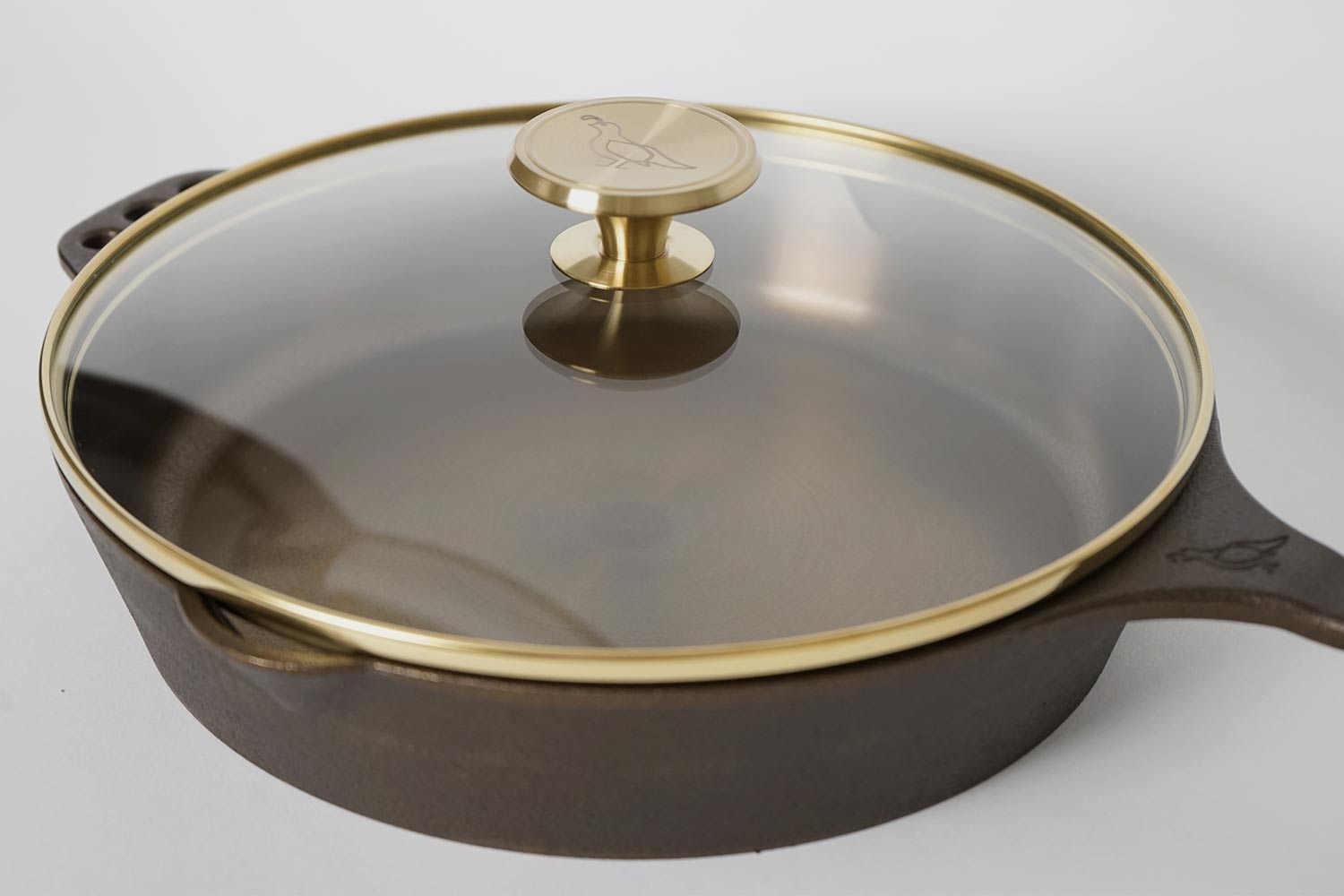Nota bene: All products in this article are independently selected and vetted by InsideHook editors. If you buy something, we may earn an affiliate commission.
This is part of InsideHook’s list of The 100 Best American-Made Products, a celebration of the gear, clothes and goods that make up our lives, and that are the life’s work of our fellow Americans.
Twenty years ago, you didn’t have much choice when shopping for a cast iron skillet. The legendary makers of old, like Griswold and Wagner, had ceased production of their legendary pans, and the companies still churning them out had introduced new production techniques that led to heavier, rougher and — to be frank — uglier cookware. But that didn’t really matter, because you probably weren’t looking for one anyway.
Then American-made cast iron came back in a big way. People realized these skillets wouldn’t only last for decades, but they would actually get better with time; meanwhile, their modern pans were getting trashed in record speed. Today, you’ve got loads of new-era skillets to choose from, many of which I personally own and have reviewed, including the design-forward Finex (which was bought by Lodge, the cast iron stalwart founded in 1896), the Kickstarter-funded Field Company and the obsessive Butter Pat (a company recently acquired by Yeti).
I love all of those cast iron skillets for different reasons. But the one that I recommend most — for its multifaceted cooking prowess, its nonstick capabilities, its ergonomic perfection (well, as close to perfection as a heavy piece of cast iron can get) and its unparalleled kitchen-table appeal — is from Smithey Ironware.
“I came from the collectors’ world, that’s how I learned a lot about cast iron,” says Isaac Morton, who founded Smithey in 2015. “There are collector pieces that sit on the wall. They’re like pieces of art. A Griswold Spider is a good example. It’s a really interestingly cast piece, and it’s $5,000 to $6,000, $8,000 for one that’s in extraordinary condition. But using cast iron is the most important thing, right? It’s for cooking.”
When Morton set out to design his own skillet, the first of which was the No. 10, he kept coming back to the phrase “Use it well,” which has become the company’s tagline. In creating a beautiful piece of cookware, which features an enchanting bronze-colored polished interior, their California quail logo on the handle and bottom, and a signature helper handle with three holes, he wasn’t trying to fashion another art piece to collect dust on the wall; instead, he was hoping to use beauty as an entrypoint to daily use in the average American’s kitchen.
“A piece of cookware that you see every day and that you use every day, you want it to look good,” he says. “One of the coolest things about Smithey, and cast iron broadly, is that it requires care. It’s like a garden or classic car. Early on, it requires a little bit of care to get it into condition, but once the owner has seen it change from this beautiful piece on a shelf to a well-seasoned machine, it takes on a life of its own and someone has a psychological bond to it. That’s one of the things that I experienced as someone that enjoyed cast iron, and I want our customers to experience that same thing.”
The 100 Best American-Made Products
Celebrating the gear, clothes and goods that are the life’s work of our fellow AmericansIf Morton didn’t enjoy cast iron, to the point of forming psychological bonds, he would almost certainly have flamed out in the first few years of running Smithey.
“It was a garage and me driving all around town to different people that were helping me solve problems that I didn’t understand how to solve myself, whether it’s seasoning or machining or tumbling or whatever it might be,” he says of the company’s beginnings nine years ago. “It was just me trying to turn skillets out in a commercial oven that I bought while managing, packaging and shipping and everything else that comes along with it.”
Today, Smithey works with a few foundries in the U.S. who make raw castings, which are then finished at the company’s own production facility in Charleston, South Carolina, where, at their busiest time of the year, Morton estimates they employ around 40 people. And just two months ago, he even moved his office from “the equivalent of a trailer inside the production facility” into a space with, get this, actual windows.
In other words, while some have predicted this 21st century cast iron boom would be a flash in the pan, Morton thinks he and his fellow skillet boosters have already proved that prognostication wrong.
“I think it’s definitely here to stay,” he says of cast iron cookware. “I would argue that it’s always been here, it’s just people are now telling the story. There have always been people obsessed with cast iron. They’re probably surprised it didn’t happen sooner.”
We've put in the work researching, reviewing and rounding up all the shirts, jackets, shoes and accessories you'll need this season, whether it's for yourself or for gifting purposes. Sign up here for weekly style inspo direct to your inbox.
